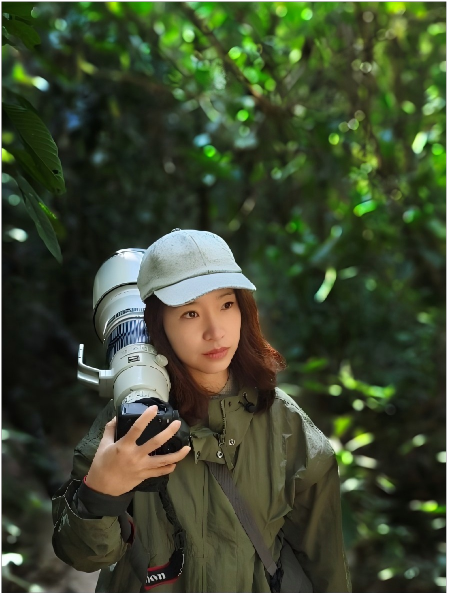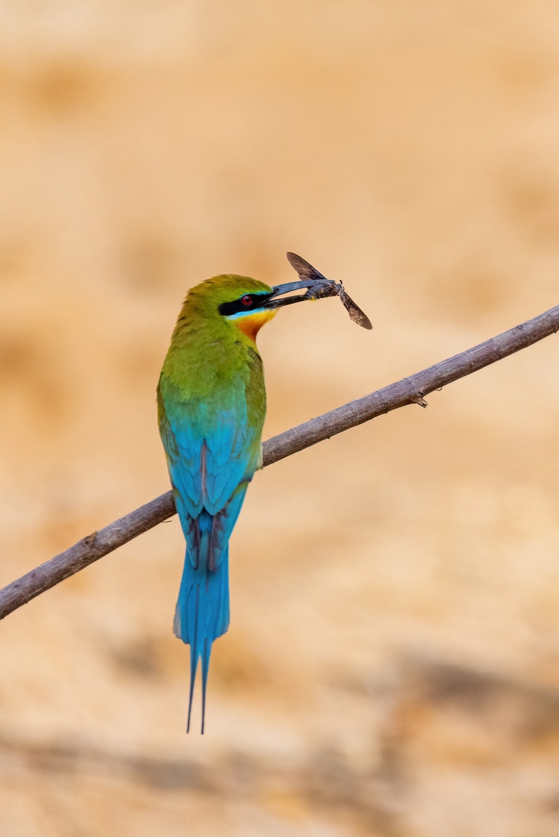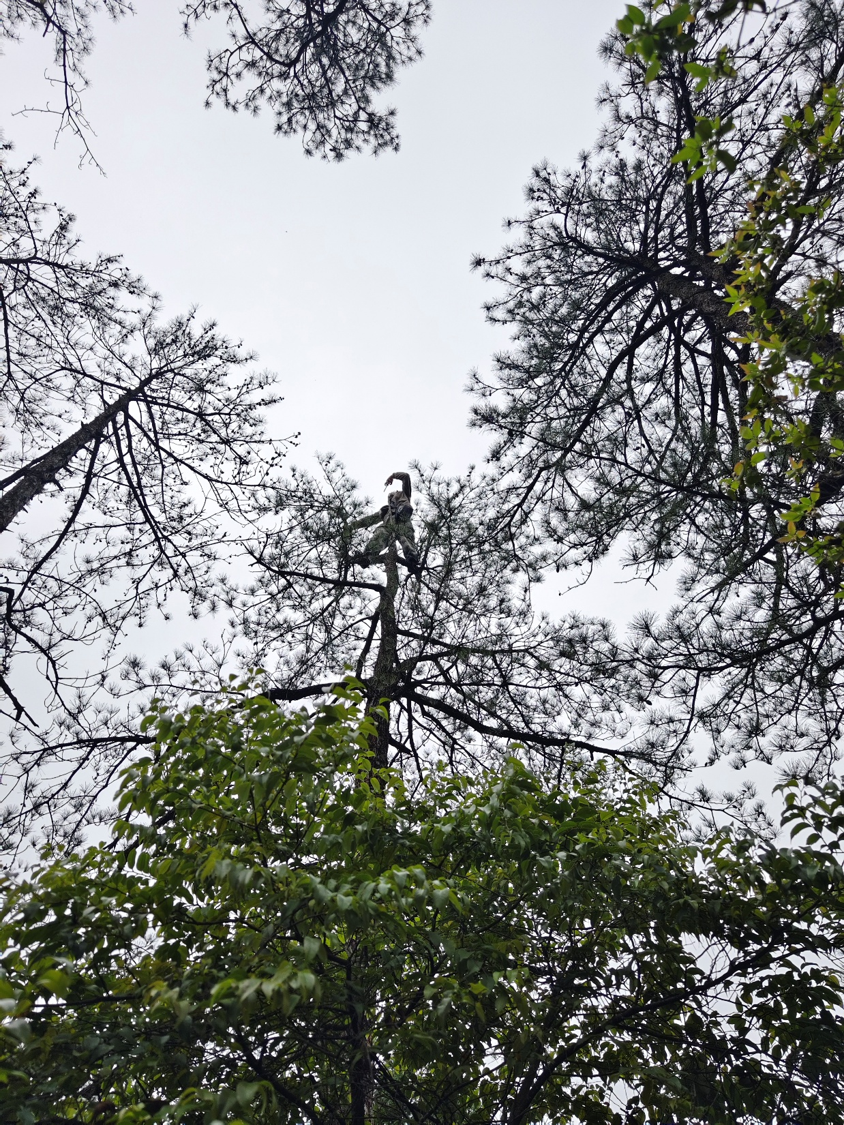Editor's Note: April 8 marks International Rare Animal Protection Day. In China, years of extensive conservation endeavors have yielded positive outcomes. A Chinese wildlife photographer shares her thoughts on protecting rare animals through the lens.
"Listen, that's a magpie singing." said Xu Keyi, a wildlife photographer who can identify bird species by just hearing their calls.
Xu, 37, developed an interest in capturing animals on camera when she was a child, always dreaming of traveling the world with a camera.

Xu Keyi, a passionate wildlife photographer, at work in the jungle. [Photo provided to chinadaily.com.cn]
Before she fully embraced a career in wildlife photography, she was engaged in journalism after earning her master's degree from the Chinese University of Hong Kong.
The turning point came during a trip to Antarctica, where Xu witnessed penguin parents fearlessly defending their chicks from intruders. The moment left a deep impression on her and deepened her passion for immersing herself in nature.
In 2018, Xu made the life-changing decision to leave her job and pursue wildlife photography full-time. "Now I've traveled across all seven continents and four oceans, but what I love most is the wildlife within China's 9.6 million square kilometers," Xu said. She is particularly drawn to flagship species, such as the snow leopard and the green peafowl, the only native peafowl in China.
Last year, in Yunnan province, Xu went through a tough early morning climb up a mountain to capture the elusive green peafowl. After enduring hours of rain and sweltering heat, as the sun broke out and cast light on the hillside in the afternoon, she finally made it.
As if on cue, a male peafowl's call echoed through the valley. "It was a moment of breathtaking beauty," she recalled.

This stunning shot of a blue-tailed bee-eater preying on a hawkmoth is featured in a Chinese encyclopedia named "Hawkmoth of China". [Photo provided to chinadaily.com.cn]
Besides, Xu is also a well-known influencer of wildlife knowledge, and she hopes to trigger more actions to care about the planet through her photos.
"Too often, we don't learn about a species until it's extinct, but it's too late. We should pay more attention to save endangered species, just like how China has protected crested ibis," she said.

Xu Keyi and fellow photographers climbed pine trees at the edge of the cliff to get a shot of the golden kaiserihind. [Photo provided to chinadaily.com.cn]
During a journey to film the golden kaiserihind, the only butterfly on the list of first-class national protected wild animals in China, Xu met an elderly wildlife protector who voiced his concerns about the lack of people devoted to protecting the species.
"Shortly after I published my photos of golden kaiserihind, he shared a picture of volunteers with me, saying that they hoped to join the conservation efforts after seeing my images," Xu said.

The golden kaiserihind, captured by Xu Keyi. [Photo provided to chinadaily.com.cn]
"Wildlife photography seems to have shifted from being a pastime for the elderly. The participation of the growing number of youths inspires me with optimism," she said.
She also believes that the recent updates to China's list of nationally protected wild animals have strengthened public awareness through legal means.
"There are also many real efforts that everyone can easily make in daily lives, which include using less plastic and stopping feeding wild animals," Xu said.
Wu Jia contributed to this story.